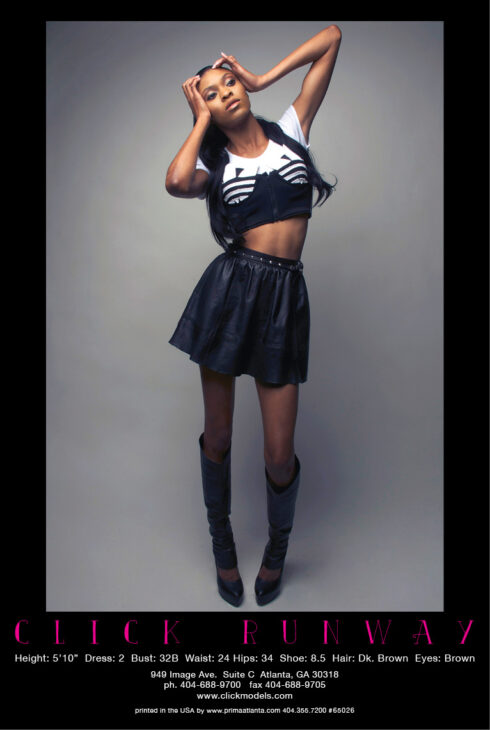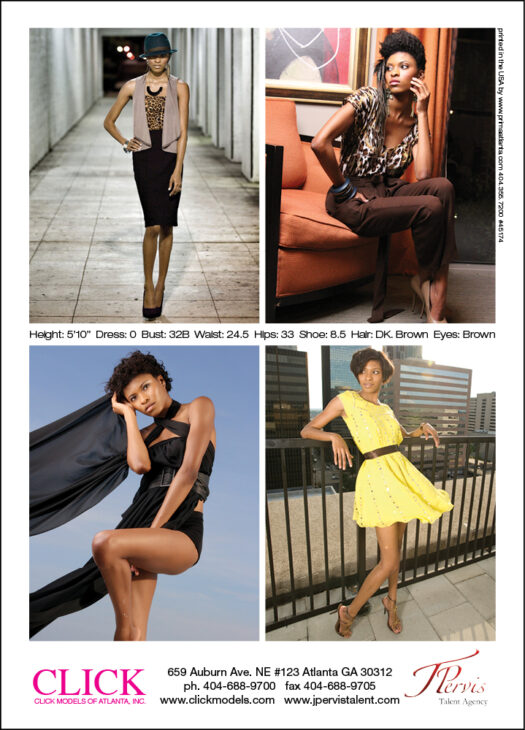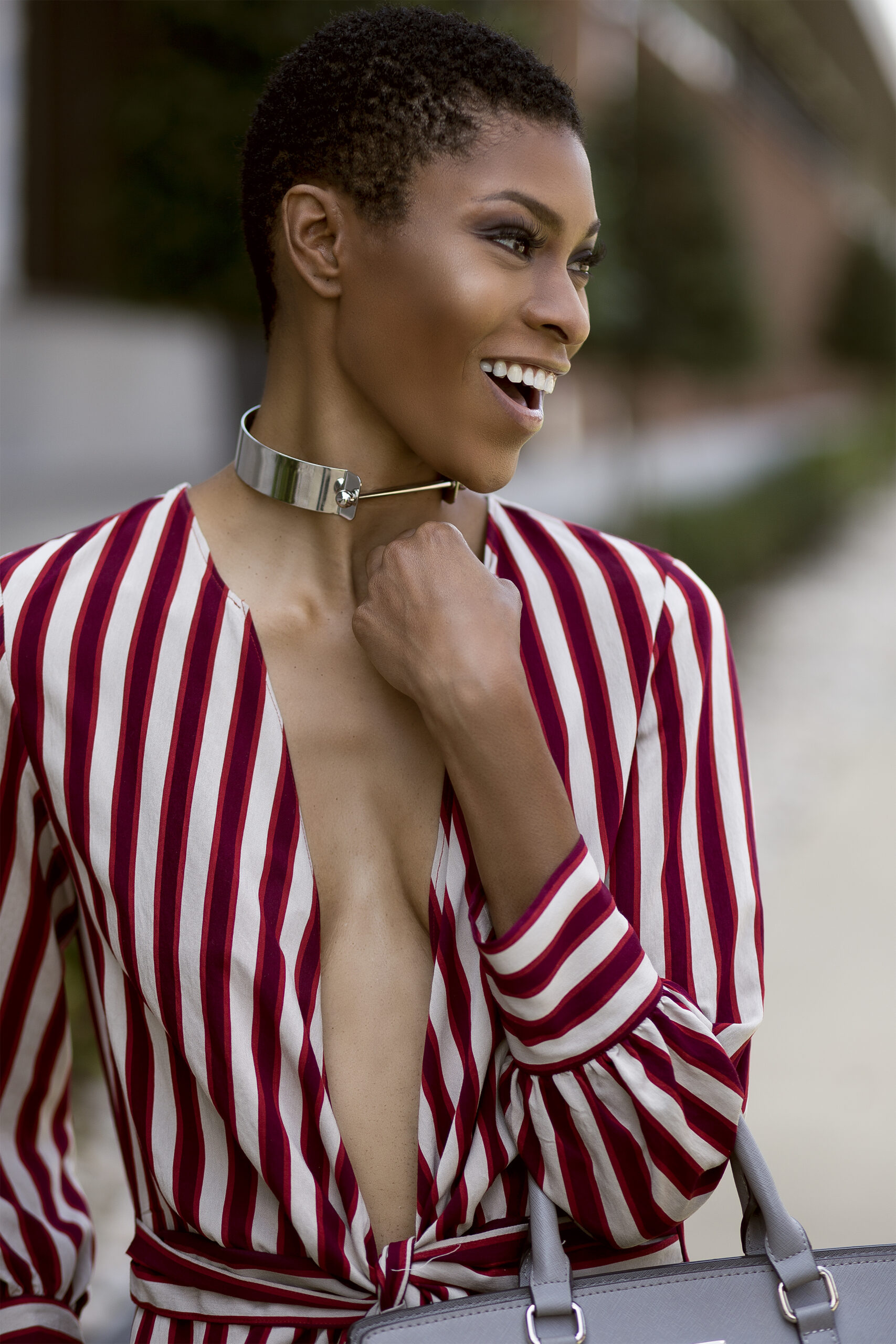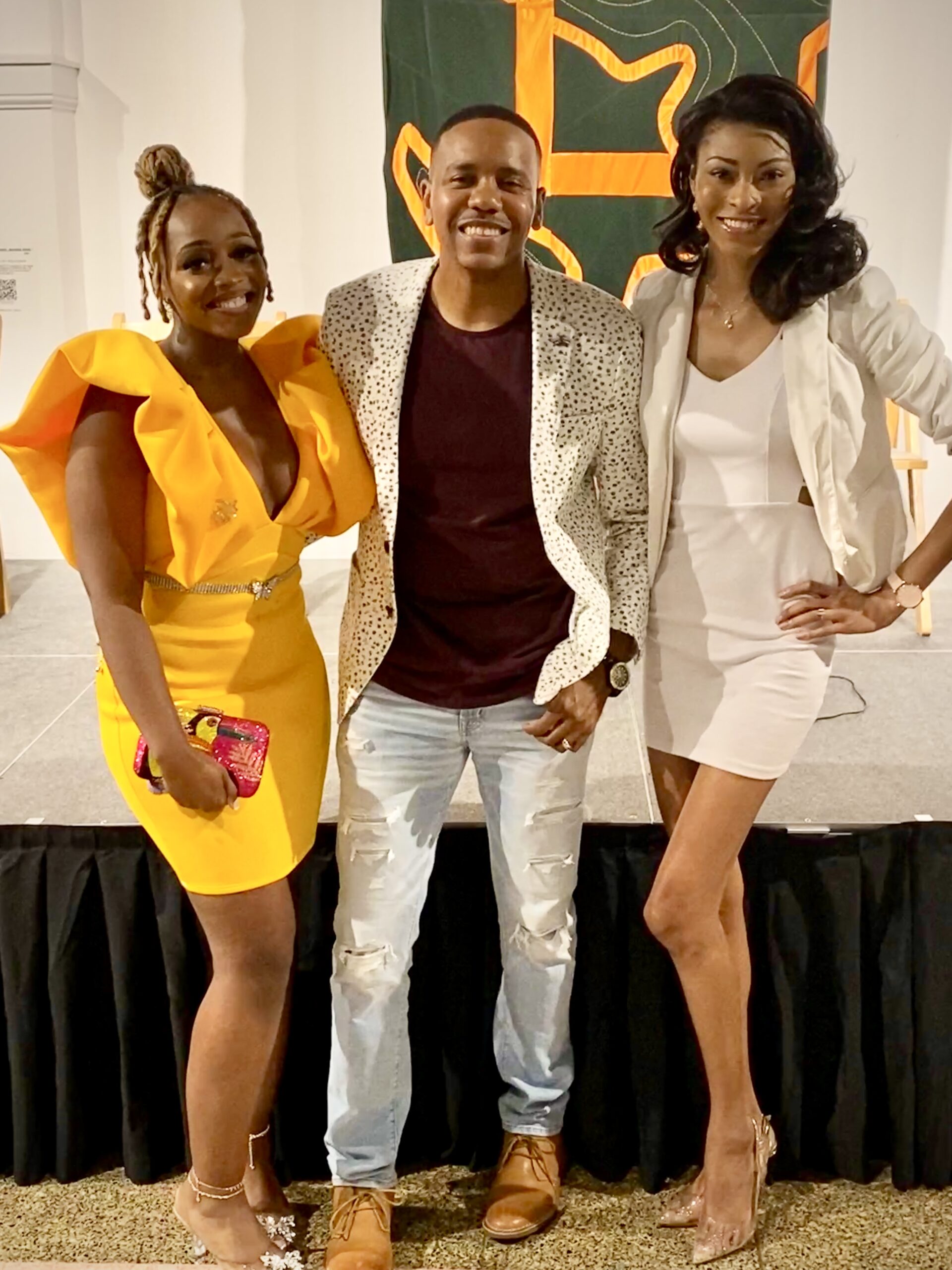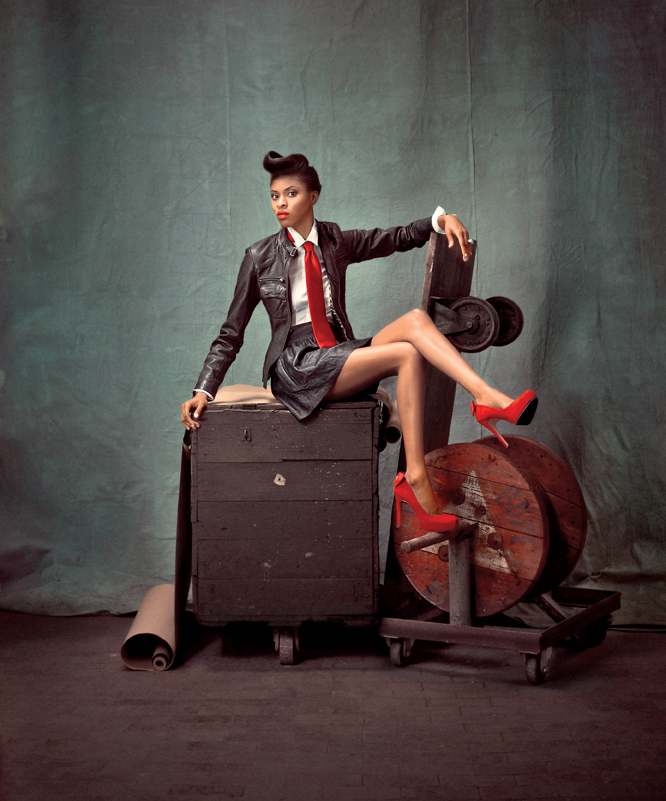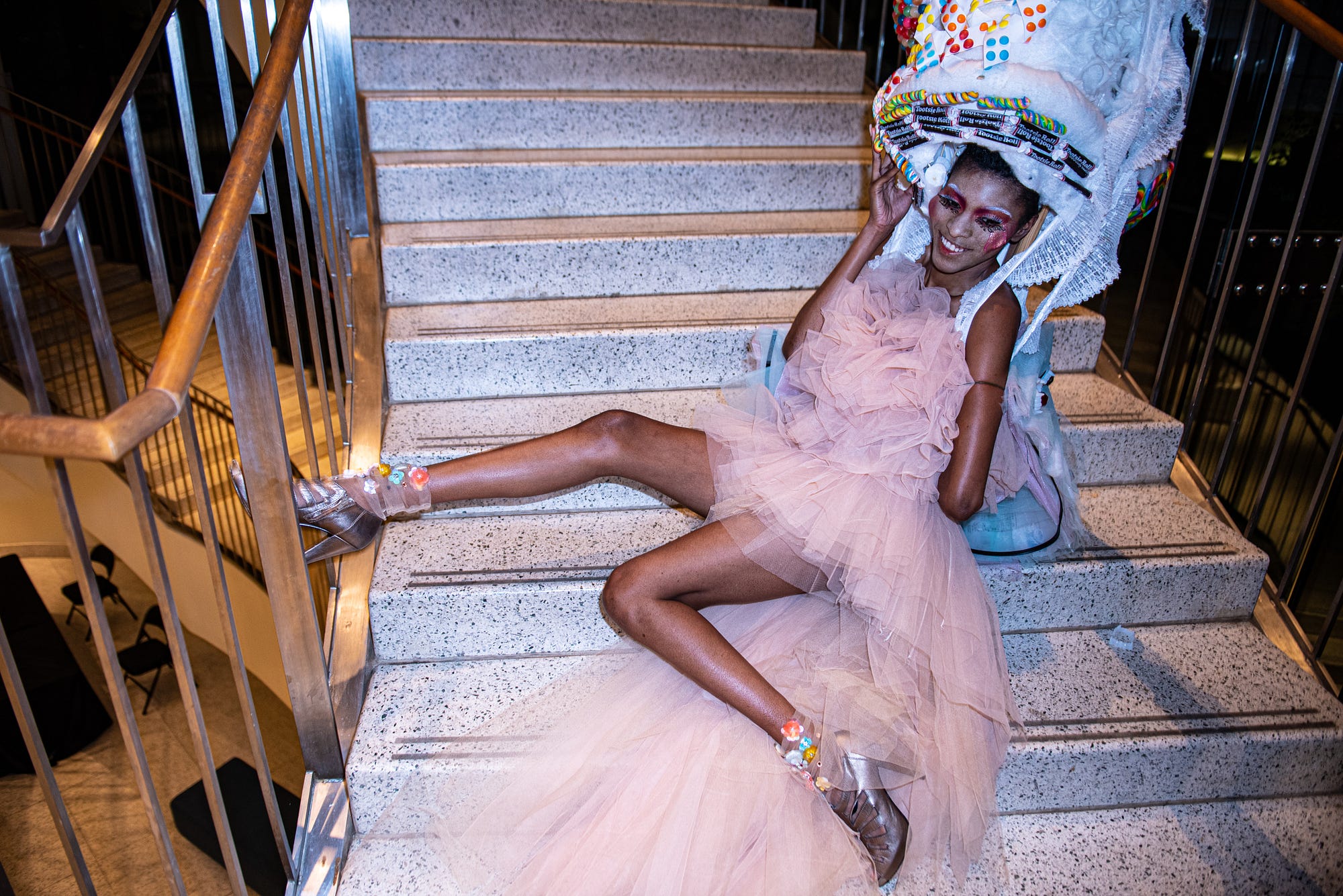Building a modeling portfolio isn’t about collecting as many photos as possible—it’s about curating a story that speaks directly to the clients you want to work with.
When I started modeling, I made every mistake you could imagine with my portfolio. I said yes to every shoot, collected hundreds of images, and wondered why I wasn’t booking the work I actually wanted. The truth I learned through years of trial and refinement is this: your portfolio is your business card, your resume, and your creative manifesto all rolled into one. It deserves the same thoughtful attention you’d give to any important business decision.
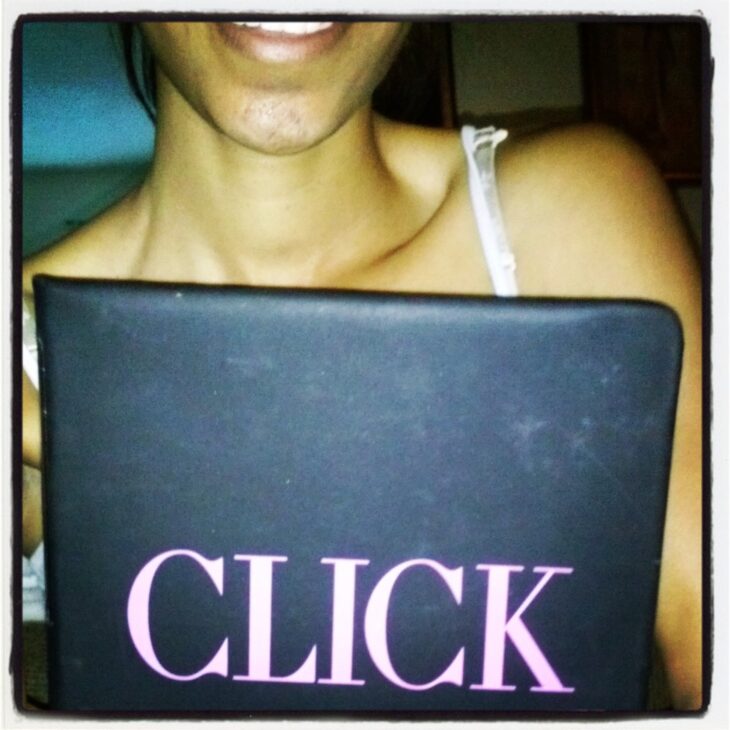
Understanding What a Portfolio Really Is
Let’s start with the basics, because clarity here changes everything. Your modeling portfolio isn’t just one thing—it’s an ecosystem of materials that work together to represent you professionally. When I first signed my exclusive two-year contract with Click Models, they handed me something that would become one of my most treasured possessions: a blank portfolio book, ready to be filled with tear sheets, magazine covers, and bodies of my work.
I remember walking into that agency and seeing other models with thick, impressive books filled with years of editorial spreads and campaign work. As a newbie, I felt intimidated and self-conscious looking at my empty book. But everyone has to start somewhere, and I made a conscious decision to turn that initial skepticism into optimism. I knew what my focus was, I understood my goals, and I made that clarity my shining star. Now, years later, I have a very extensive book that tells the story of my journey in this industry.
Your Portfolio Toolkit: The Complete Ecosystem
Digital Portfolio: This is your main collection, typically ranging from 15-25 images for most models, though as a high fashion editorial model, I maintain closer to 30-35 carefully curated pieces. This digital collection lives on your website (like mine at infinityjasele.com) and serves as your always-accessible showcase. Think of it as your greatest hits album, but more strategic than nostalgic.
Your digital portfolio should load quickly, display beautifully on all devices, and tell a cohesive story about who you are as a model. Mine focuses heavily on editorial work that showcases my tall frame, unique features, and European aesthetic—even though I’m an African American woman from the South. This digital space allows potential clients to understand immediately that they won’t see me in urban campaigns or commercial projects. It’s about authentic representation of your brand.
Print Portfolio: This is where the magic happens in person. A physical book creates an entirely different experience than scrolling through images on a screen. The weight of quality paper, the richness of professional printing, the satisfaction of turning each page—it all contributes to how a client perceives your professionalism and the value of your work.
I actually maintain two distinct print portfolios: an editorial book and a runway book. My editorial book contains my strongest fashion spreads, beauty campaigns, and artistic collaborations—images that demonstrate my ability to embody high fashion concepts and work with top creative teams. My runway book focuses specifically on fashion week work, designer collaborations, and images that show my movement and presence on the catwalk.
Each book is typically 12-20 pages, with images printed on high-quality paper and bound professionally. The investment is significant—a quality portfolio book can cost $300-800—but it’s absolutely essential for in-person meetings and castings. The tactile experience of looking through a physical book creates a connection that digital simply cannot replicate.
Comp Cards: These are your professional business cards, but so much more strategic. A comp card typically features 3-5 of your strongest images arranged thoughtfully to show your range, along with your vital statistics, measurements, and contact information. They get left behind at castings, sent to potential clients, and distributed at industry events.
For someone like me who doesn’t thrive on social media or attend every industry party, comp cards become even more important. They’re my introduction when I’m not in the room. I update mine every 6-8 months to ensure they always represent my current look and strongest work. The key is choosing images that work well together while showing different aspects of your modeling abilities—for me, that might be a striking beauty shot, a full-length editorial image, and a clean headshot that shows my bone structure.
Social Media Presence: I’ll be honest—this is where I differ from many models in today’s industry. I’m not interested in being an influencer or maintaining a constant social media presence. I’m what you might call a “quiet model.” My focus at this point in my career is on clients and projects that align with my values and aesthetic, rather than building a massive following.
However, I understand that for many models, social media serves as a daily connection with the industry. If this is part of your strategy, your feed should feel cohesive and professional without being overly curated. Not every image needs to be portfolio-worthy, but your overall presence should support the story your professional materials are telling.
Model Digitals: These are the unsung heroes of your portfolio toolkit, and they’re purely functional. Digitals are raw, unretouched photos showing your natural look, proportions, and current condition. Think driver’s license photo, not glamour shot—and I mean that in the best possible way.
Good digitals include a clean headshot (front and profile), full-length shots (front, side, and back), and close-ups that show your skin condition and natural features clearly. They’re typically shot against a plain background with natural lighting and minimal to no makeup. While they’re not meant to be beautiful in the traditional sense, they serve a crucial purpose: giving clients an honest representation of what you look like without professional styling and retouching.
I update my digitals every 3-4 months, or anytime my look changes significantly. They’re essential for online casting submissions and help clients determine if you’re right for their project before investing in an in-person meeting.
Website Portfolio: Your website is your digital home base, and it needs to work flawlessly. Mine at infinityjasele.com serves as both a portfolio showcase and a reflection of my brand identity. The site needs to load quickly, display images beautifully, and make it easy for potential clients to understand what I offer and how to contact me.
Your website portfolio should be a carefully curated selection that represents your strongest work and current direction. It’s not a comprehensive archive—it’s a strategic presentation designed to attract the right opportunities. The images should be high-resolution, professionally shot, and organized in a way that tells your story clearly.
Tear Sheets and Editorial Clips: These are the published pieces that prove your work has been deemed worthy by industry professionals. When magazines, brands, or designers choose to feature your work, those published pieces become incredibly valuable portfolio additions.
I keep both digital copies and physical tear sheets of all my published work. There’s something powerful about showing a potential client that your work has appeared in respected publications. It provides third-party validation of your abilities and demonstrates that you can deliver results that meet publication standards.
Each piece of your portfolio toolkit serves a different purpose, but they all need to work together harmoniously. The story they tell should be consistent, authentic, and clearly targeted toward the type of work you want to book. For me, everything points toward high fashion editorial work with European aesthetic sensibilities—and that clarity has been essential to building the career I actually want, rather than accepting whatever opportunities come my way.
Discovering Your Modeling Identity
Before you book a single shoot, you need to understand what type of model you are—and more importantly, what type of work you want to attract. This self-awareness will save you countless hours and thousands of dollars pursuing opportunities that were never meant for you.
I identify as a high fashion editorial model. I’m tall with unique features, a thin frame, and what industry professionals often describe as European aesthetics—even though I’m an African American woman from the South. This combination creates a very specific positioning in the market. You’re not likely to see me in urban campaigns or commercial projects, and that’s completely intentional. Understanding and owning this positioning has been crucial to building a successful and fulfilling career.
The Main Categories to Consider
Commercial/Lifestyle Models: These are the models who sell everyday products and experiences that need to feel accessible to the average consumer. They have approachable, relatable beauty—the kind that makes viewers think, “I could see myself using that product” or “She looks like someone I’d be friends with.”
Commercial models often work in catalog photography, e-commerce, lifestyle campaigns, and advertising that targets broad audiences. They need to be versatile in their expressions and comfortable embodying different relatable scenarios. The work is often more financially stable than editorial modeling, with higher day rates and more consistent bookings.
If you’re naturally warm, approachable, and have the kind of beauty that photographs well in natural lighting with minimal styling, commercial modeling might be your path. The key is looking like an elevated version of the target customer, rather than an untouchable fashion icon.
High Fashion/Editorial Models: This is my world, and it’s quite different from commercial work. Editorial modeling is about creating images that inspire, challenge, and push artistic boundaries. We’re often selling aspiration rather than accessibility, working with avant-garde concepts, high-end fashion, and creative teams who see fashion as art.
Editorial work appears in fashion magazines, artistic campaigns, and runway shows. The day rates can be lower than commercial work, but the creative fulfillment and industry prestige are significant. You need to be comfortable with dramatic styling, unusual poses, and concepts that might feel uncomfortable or strange to outsiders.
The physical requirements tend to be more specific—typically tall (5’8″ and above for women), with unique or striking features that photograph interestingly. But more than physical attributes, you need the ability to embody different characters and emotions convincingly, often with minimal direction.
Plus-Size/Curve Models: This category has exploded in recent years as brands recognize the importance of representing realistic body diversity. Plus-size models typically wear size 12 and above, and work in both commercial and editorial contexts.
The work ranges from mainstream fashion campaigns to specialized plus-size retailers, body-positive editorial spreads, and lifestyle brands that want to represent authentic diversity. Like all modeling categories, success requires professionalism, reliability, and the ability to embody confidence and beauty regardless of conventional standards.
Fitness/Athletic Models: These models specialize in showcasing strength, health, and active lifestyles. They work with sportswear brands, fitness equipment companies, health and wellness campaigns, and lifestyle brands targeting active consumers.
Physical fitness is obviously crucial, but so is the ability to embody different types of athleticism convincingly. You might need to look like a runner in one shoot and a yogi in another. The work often involves actual physical activity during shoots, so stamina and coordination are important.
Mature/Silver Models: This growing category represents the expanding market of consumers over 40, 50, and beyond. As beauty standards evolve and consumer bases age, there’s increasing demand for models who represent life experience and sophisticated beauty.
The work ranges from luxury fashion brands targeting affluent older consumers to healthcare and lifestyle companies that want authentic representation. Success in this category often depends on maintaining excellent physical condition while embracing the natural signs of aging gracefully.
Alternative/Artistic Models: These models have unique looks that challenge mainstream beauty standards—unusual features, alternative styling, or distinctive personal aesthetics that make them perfect for certain creative projects.
This category often overlaps with editorial work and appeals to brands that want to stand out from conventional advertising. The work can be highly creative but may be more sporadic than other categories.
Parts Modeling: Some models specialize in hands, feet, or other specific body parts. This requires those particular features to be exceptionally photogenic and well-maintained.
Parts models often work in product photography, beauty campaigns, and commercial advertising. While it might seem limiting, successful parts models can build very lucrative careers focusing on their specialty.
The Importance of Honest Self-Assessment
Here’s what I wish someone had told me earlier: you don’t have to fit perfectly into one category, but you do need to understand where you fit best. I spent my early years trying to be everything to everyone, and it diluted my message completely.
The modeling industry is brutally honest about physicality and marketability. Fighting against your natural positioning is exhausting and usually unsuccessful. Instead, identify your strengths and build your entire career strategy around maximizing those advantages.
For me, accepting that I’m not the “girl next door” and will never book certain types of commercial work was liberating. It allowed me to focus entirely on developing the skills and portfolio pieces that would make me irresistible for high fashion editorial work. That focus has led to a much more fulfilling and financially successful career than trying to compete in markets where I was never going to excel.
Quality Over Quantity: The Art of Curation
This might be the most important lesson I can share, learned through years of making expensive mistakes: a portfolio with 10 exceptional images will always outperform one with 50 mediocre shots.
When I started building my first professional book with Click Models, I felt pressure to fill it quickly. I wanted to compete with those thick, impressive portfolios I saw other models carrying. But my agency director gave me advice that changed my entire approach: “One extraordinary image is worth more than twenty good ones. We’re not collecting photos—we’re building a weapon.”
That perspective shift was revolutionary. I stopped thinking of my portfolio as a photo album and started treating it as a strategic business tool designed to book specific types of work. Every image needed to earn its place by serving a clear purpose in my overall narrative.
What Makes an Image Portfolio-Worthy?
Technical Excellence: This is non-negotiable. Sharp focus, proper lighting, professional composition, and flawless execution. I learned this lesson expensively when I included images that were “almost” perfect. In a competitive industry, “almost” doesn’t book work.
The technical standards for portfolio images are impossibly high because they need to reproduce beautifully in multiple formats—on websites, in print, on phones, and potentially in client presentations. An image that looks acceptable on your laptop might fall apart when printed large or viewed on a high-resolution monitor.
Authentic Expression: You should look comfortable and natural, never like you’re trying too hard. This was challenging for me to learn because it seems counterintuitive—we’re literally being paid to “try” to look good. But the best portfolio images capture moments where technique becomes invisible and authentic expression shines through.
For editorial work especially, clients need to see that you can embody different emotions and characters convincingly. They’re not just hiring your physical appearance; they’re hiring your ability to bring their creative vision to life authentically.
Clear Purpose: Each image should serve a specific function in telling your story. In my editorial book, I include a powerful headshot that shows my bone structure, a full-length fashion image that demonstrates my movement and posture, a beauty shot that highlights my skin and features, and several conceptual editorial pieces that show my range in embodying different moods and characters.
Every image answers a question a potential client might have: Can she work with dramatic lighting? Can she embody elegance? Can she handle avant-garde concepts? Can she look expensive and sophisticated? Each piece of my portfolio addresses specific concerns clients might have about booking me.
Commercial Viability: This is where brutal honesty becomes essential. You need to look at each image and ask yourself, “Can I see this in a campaign or magazine?” If the answer is anything other than an enthusiastic yes, it doesn’t belong in your main portfolio.
I’ve learned to step back from personal attachment to images. Sometimes a photo is beautiful, meaningful to me personally, or technically well-executed, but it doesn’t serve my professional goals. Those images belong in my personal collection, not my business portfolio.
Emotional Connection: The viewer should feel something when they look at it. This is perhaps the most difficult quality to define, but it’s what separates good portfolio images from extraordinary ones.
In editorial modeling especially, we’re selling emotion and aspiration. The image needs to make someone stop, look longer, and feel something—whether that’s elegance, power, mystery, or beauty. Technical perfection without emotional impact is just expensive documentation.
My Ruthless Editing Process
I’ve learned to be absolutely ruthless in my editing process, and it’s one of the most valuable skills I’ve developed. If an image doesn’t make me feel proud and excited every time I see it, it doesn’t belong in my main portfolio. This standard seems impossibly high, but it’s exactly what separates working models from aspiring ones.
My editing process involves several stages. First, I review all images from a shoot immediately, noting which ones have potential. Then I wait at least a week before reviewing again—this distance helps me see them more objectively. Finally, I show potential portfolio pieces to trusted industry professionals and listen to their honest feedback.
The hardest part is removing images that are “good enough.” Good enough doesn’t book editorial work. Good enough doesn’t justify the day rates I want to command. Good enough is the enemy of extraordinary, and extraordinary is what gets remembered in a competitive market.
I currently maintain approximately 35 images in my digital portfolio, which is larger than many commercial models but appropriate for editorial work where showing range and artistic collaboration is crucial. However, I’m constantly refining this collection. When I add a new image, something else usually gets removed. The collection stays focused and current.
Understanding Image Lifespan
Not all portfolio images age equally. Beauty shots might remain relevant for several years if your look hasn’t changed dramatically, while fashion images can become dated more quickly as styling trends evolve. Editorial concepts often have longer lifespans than commercial lifestyle images, which can feel dated as social trends shift.
I review my entire portfolio every six months and make updates based on several factors: Do these images still represent my current look? Do they support my current career goals? Are there any gaps in the story I’m telling? Have I created stronger work that makes older pieces less relevant?
This regular curation process ensures my portfolio always represents my best and most current work. It’s an investment in maintaining professional standards and staying competitive in a constantly evolving industry.
Understanding Different Types of Shoots
Not all photoshoots are created equal, and understanding these differences will save you time, money, and heartache. Each type serves different purposes in your career development, and knowing when to pursue each one is crucial for building a strategic portfolio.
Early in my career, I said yes to almost everything, thinking any shoot was better than no shoot. I learned the hard way that not all opportunities move your career forward—some can actually hurt your professional reputation if you’re not careful about the collaborators you choose and the quality standards you maintain.
Test Shoots (TFP – Time for Print)
What they are: Test shoots are collaborative projects where everyone works for portfolio images instead of monetary payment. Models, photographers, stylists, hair and makeup artists all contribute their time with the understanding that everyone will receive professional images for their portfolios.
The reality of test shoots: Results can be wildly inconsistent because everyone’s commitment levels, experience, and professional standards vary dramatically. I’ve participated in test shoots that produced some of my strongest portfolio pieces, and others that were complete wastes of time that taught me valuable lessons about vetting collaborators.
Best for: New models building their first professional images, established models trying new concepts or working with new creative teams, or anyone wanting to experiment with artistic concepts that might not have commercial applications.
My approach to test shoots: Now, several years into my career, I’m extremely selective about test shoots. I only participate when I genuinely want to work with specific photographers whose aesthetic aligns with my portfolio goals, or when we’re exploring concepts that could lead to stronger work than I currently have.
Before agreeing to any test shoot, I research the photographer’s previous work thoroughly, ask to see examples of their retouching style, and discuss usage rights clearly upfront. I also require a detailed mood board and concept discussion before shooting—professional collaboration requires professional planning, even when money isn’t changing hands.
Red flags to avoid: Photographers who pressure you to shoot immediately without planning, refuse to show you examples of their finished work, or seem more interested in the number of models they can shoot than the quality of images they create. Also be cautious of anyone who suggests shooting at private residences rather than professional studios, or who seems unclear about what styles of images they want to create.
Paid Shoots
What they are: Professional bookings where you’re compensated for your time, image usage, and professional services. These represent the ultimate goal for most models—being valued enough that clients invest financially in working with you.
The progression to paid work: Moving from test shoots to paid bookings requires demonstrating consistent professionalism, developing a strong portfolio, and often building relationships within the industry. For editorial models like myself, this progression can take longer than for commercial models, but the work tends to be more creatively fulfilling.
Types of paid work: Editorial day rates for magazine work, campaign fees for brand collaborations, runway fees for fashion shows, and licensing fees for image usage. Each type has different payment structures, usage terms, and professional expectations.
Why paid work matters beyond money: When clients invest financially in working with you, they’re more invested in the success of the project. Paid shoots typically involve more pre-production planning, better creative teams, higher production values, and more professional treatment overall. The images often turn out stronger because everyone involved has more at stake.
Best for: Experienced models with strong portfolios who understand their professional worth and can deliver consistent results. Also for any project where the creative vision aligns with your portfolio goals and the team’s previous work demonstrates they can execute at the level you need.
My standards for paid work: I’m selective about the paid opportunities I accept, focusing on projects that align with my brand and aesthetic rather than accepting every offer. At this point in my career, I prioritize working with clients and creative teams that understand high fashion editorial work and share my commitment to creating extraordinary images.
Trade Shoots
What they are: Professional collaborations where you receive professional images, styling, or other valuable services in exchange for your modeling services. This sits between test shoots and paid work—more professional than TFP but not involving direct monetary compensation.
When trade makes sense: Trade can be valuable when working with established professionals whose work you genuinely want in your portfolio, when the styling or creative direction offers something unique you couldn’t access otherwise, or when building relationships with industry professionals who might lead to paid opportunities.
My experience with trade: Some of my strongest portfolio pieces came from trade collaborations with photographers and creative teams I specifically wanted to work with. These shoots often feel more like professional partnerships than transactional arrangements, leading to ongoing creative relationships.
The key to successful trade: Clear communication about expectations, deliverables, and usage rights upfront. Both parties should feel they’re receiving equal value from the collaboration. I only do trade work when I’m genuinely excited about the creative opportunity and confident the team can deliver the quality I need.
Understanding Shoot Outcomes vs. Expectations
Editorial shoots: These focus on creating artistic, conceptual images that might appear in magazines or fashion editorials. The goal is usually to create one or two exceptional images rather than a large quantity. Expect experimental concepts, dramatic styling, and creative direction that pushes boundaries.
Commercial shoots: These create images for advertising, catalogs, or lifestyle marketing. The goal is typically to produce multiple usable images showing products or lifestyle scenarios. Expect more straightforward concepts, natural styling, and direction focused on relatability rather than artistic expression.
Beauty shoots: These focus specifically on showcasing hair, makeup, and skincare. Expect close-up work, attention to skin detail, and styling that enhances rather than distracts from beauty elements.
Fashion shoots: These highlight clothing and accessories. Expect multiple outfit changes, attention to garment details, and poses that show clothing advantageously.
Runway/movement shoots: These capture your ability to move and pose dynamically. Expect direction about walking, posing in motion, and showing your ability to embody different energies.
The biggest mistake I see models make is approaching every shoot with the same energy and expectations. Understanding what type of images the creative team wants to create allows you to prepare appropriately and deliver what they actually need rather than what you think they should want.
Understanding Usage Rights (This Changes Everything)
This topic could fill an entire article on its own, but here’s what you absolutely must know:
Buyout: The client owns the images completely and can use them however they want, forever.
Limited Usage: Specific terms about where, when, and how long images can be used.
Editorial: Images can be used in magazines or editorial content, but not for advertising.
Commercial: Images can be used to sell products or services.
Social Media Rights: Separate permissions for digital platform usage.
Understanding usage rights affects both what shoots you accept and which images you include in your portfolio. An image with limited usage might be perfect for your book, while a full buyout image might need to be retired from your marketing materials.
Market Understanding: Where Do You Fit?
Different markets have completely different needs, and your portfolio should reflect where you want to work.
New York Market
- High fashion, editorial focus
- Extremely competitive
- Values unique looks and strong personalities
- Portfolio needs: striking editorials, strong black and white images, avant-garde concepts
Los Angeles Market
- Commercial, lifestyle, and entertainment focus
- More diverse in age and look requirements
- Values versatility and natural beauty
- Portfolio needs: natural lifestyle shots, commercial headshots, beach/outdoor imagery
Chicago/Regional Markets
- Mix of commercial and catalog work
- Values reliable, professional models
- More accessible for developing talent
- Portfolio needs: clean commercial images, approachable lifestyle shots, professional headshots
International Markets
- Varies dramatically by location
- Often values specific physical requirements
- May require different portfolio approaches
- Portfolio needs: Research specific market requirements extensively
Signed vs. Freelance: The Portfolio Strategy Difference
Your representation status dramatically affects your portfolio strategy, and understanding this early will save you from costly mistakes.
Signed Models (Agency Representation)
Advantages:
- Professional guidance on portfolio development
- Access to higher-quality shoots and clients
- Support in investment decisions
- Industry connections and opportunities
Portfolio Considerations:
- Your agency will have strong opinions about image selection
- Investment in professional shoots often required
- Images may need to align with agency’s overall brand
- More pressure to maintain consistently high standards
Freelance Models
Advantages:
- Complete creative control over your portfolio
- Keep 100% of your earnings
- Flexibility in the types of work you accept
- Direct relationships with clients and photographers
Portfolio Considerations:
- You’re responsible for all quality control decisions
- Need stronger business and marketing skills
- Must build your own industry relationships
- Portfolio strategy is entirely your responsibility
Neither path is inherently better, but they require different approaches to portfolio development.
Reading Your Client: What Are They Really Looking For?
This skill took me years to develop, but it’s absolutely crucial: learning to understand what a client actually needs, often beyond what they’re saying.
Decoding Client Briefs
When they say “natural and approachable”: They want someone who looks like their target customer, not a high-fashion model.
When they say “editorial and fierce”: They want someone who can embody attitude and sell aspiration.
When they say “versatile”: They need someone who can adapt to multiple looks within one shoot.
When they say “experienced”: They want someone who requires minimal direction and can deliver consistent results.
Matching Energy to Assignment
This is where so many models stumble, and I certainly did in my early days. The energy you bring must match the assignment’s needs.
For an athletic shoot: Confidence, strength, determination For a lifestyle campaign: Warmth, approachability, genuine joy For high fashion: Intensity, drama, artistic expression For commercial work: Reliability, versatility, professional ease
Your portfolio should demonstrate that you understand these different energies and can embody them authentically.
Your Main Book vs. Development Book Strategy
Here’s a strategy that changed everything for me:
Your Main Book (15-25 images)
This contains only your absolute strongest work—images you’d be proud to show to any client, any time. Every image in here should be:
- Technically flawless
- Commercially viable
- Representative of your current skill level
- Aligned with your target market
Your Development Book
This is where you experiment, try new concepts, and push creative boundaries. Images here might be:
- Artistic experiments that don’t have obvious commercial application
- Work with new creative teams you’re testing
- Concepts you’re developing but haven’t perfected yet
- Personal projects that express your creative vision
The key: Never show development work to clients. Use it to inform your growth, not to represent your current professional standard.
Building Variety Within Your Wheelhouse
One of the biggest mistakes I see models make is either being too narrow (boring) or too scattered (confusing). The sweet spot is variety within your established strengths.
If You’re a Commercial Model:
- Clean, simple beauty shots
- Lifestyle scenarios (coffee shop, walking, laughing)
- Product-focused images where you’re supporting the merchandise
- Different styling approaches (casual, professional, weekend)
- Various emotional expressions within the “approachable” range
If You’re an Editorial Model:
- High-contrast black and white portraits
- Fashion-forward styling with interesting concepts
- Different moods (mysterious, powerful, ethereal)
- Variety in makeup approaches (natural, dramatic, avant-garde)
- Different photographers’ distinct styles
The goal is to show range without losing your core identity.
Investment Strategy: Where to Put Your Money
Building a strong portfolio requires investment, and being strategic about where you spend is crucial.
Prioritize Investment In:
- Professional photography (this is non-negotiable)
- Hair and makeup artistry (the right team elevates everything)
- Wardrobe and styling (even if it’s rented or borrowed)
- Professional printing and portfolio materials
- Website development and maintenance
Be Cautious With:
- Expensive portfolio schools (often overpriced for what you get)
- “Modeling contests” that require payment
- Photographers who push expensive packages on new models
- Anyone who guarantees specific results
The Economic Reality of Portfolio Building
Let’s talk honestly about money, because this industry requires significant investment.
Expected Investment for a Strong Portfolio:
- Professional photoshoots: $500-$2,500 per shoot
- Hair and makeup: $200-$500 per shoot
- Portfolio printing: $200-$500 for quality materials
- Website development: $500-$2,000
- Comp card printing: $100-$300 per batch
Making Smart Investment Decisions:
- Start with 2-3 strong shoots rather than 10 mediocre ones
- Work with established photographers who understand your market
- Invest in timeless concepts rather than trendy ones
- Consider the long-term usage and value of each image
Maintaining and Updating Your Portfolio
Your portfolio is never truly finished—it’s a living document that should evolve with your career.
When to Update:
- Every 6-12 months minimum
- After any significant shoot that produces portfolio-worthy images
- When your look changes substantially
- When you want to target a new market or client type
- When current images no longer represent your skill level
What to Remove:
- Images older than 2-3 years (unless they’re exceptional)
- Photos that no longer represent your current look
- Work that doesn’t meet your evolved standards
- Images that don’t support your current career goals
Red Flags to Avoid
Through my own mistakes and watching others, here are the warning signs to watch for:
In Photographers:
- Pressure to shoot immediately without planning
- Unwillingness to discuss usage rights
- Portfolio filled only with similar-looking models
- Requests for payment upfront for “portfolio building”
- Reluctance to provide references from other models
In Your Own Work:
- Over-retouching that doesn’t look natural
- Too much similarity between all your images
- Focusing on trends rather than timeless quality
- Including images just because they’re recent
- Prioritizing personal favorites over commercial viability
The Mindset Shift That Changes Everything
Here’s the perspective shift that transformed my approach to portfolio building: stop thinking like a model and start thinking like a business owner.
Your portfolio isn’t a collection of pretty pictures—it’s a strategic marketing tool designed to attract specific clients and communicate specific capabilities. Every decision should be filtered through this lens:
- Does this image help me book the work I want?
- Does this represent the professional I want to be seen as?
- Would I hire someone whose portfolio looked like this?
Moving Forward With Intention
Building a standout portfolio isn’t about having the most images or working with the most famous photographers. It’s about creating a cohesive, purposeful collection that clearly communicates who you are as a model and what unique value you bring to every project.
The models who build lasting careers understand that their portfolio is an investment in their future, not just a collection of their past. They’re strategic about every image, every shoot, and every decision that affects how they’re perceived in the market.
Your portfolio should feel authentically you while serving the practical purpose of booking work. When those two things align—authenticity and commercial viability—that’s when the magic happens.
Remember: in a world of artificial perfection, authenticity combined with professional excellence is revolutionary. Your portfolio should reflect both.
What questions do you have about building your portfolio? I’d love to continue this conversation and help you navigate the specific challenges you’re facing in your modeling journey.
Looking for more industry insights and authentic guidance? Explore The Fashion Chronicles for real stories from the modeling world, or check out The Model Boutique for practical resources to support your career development.
